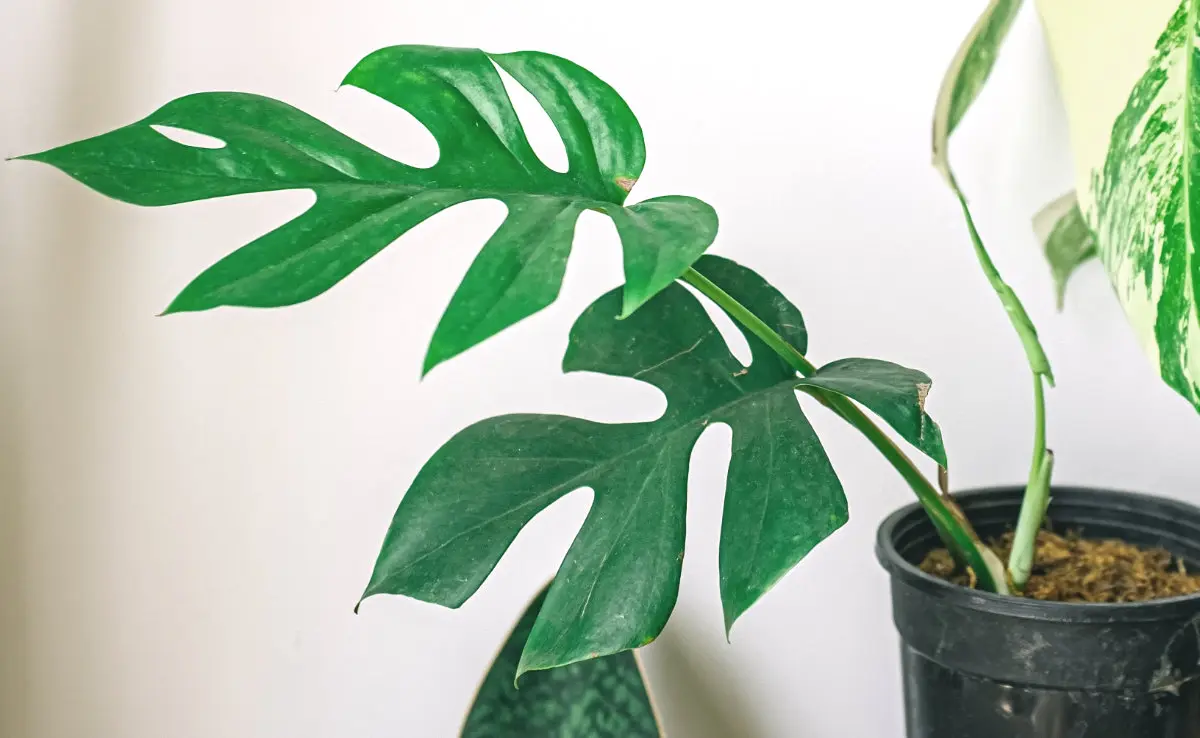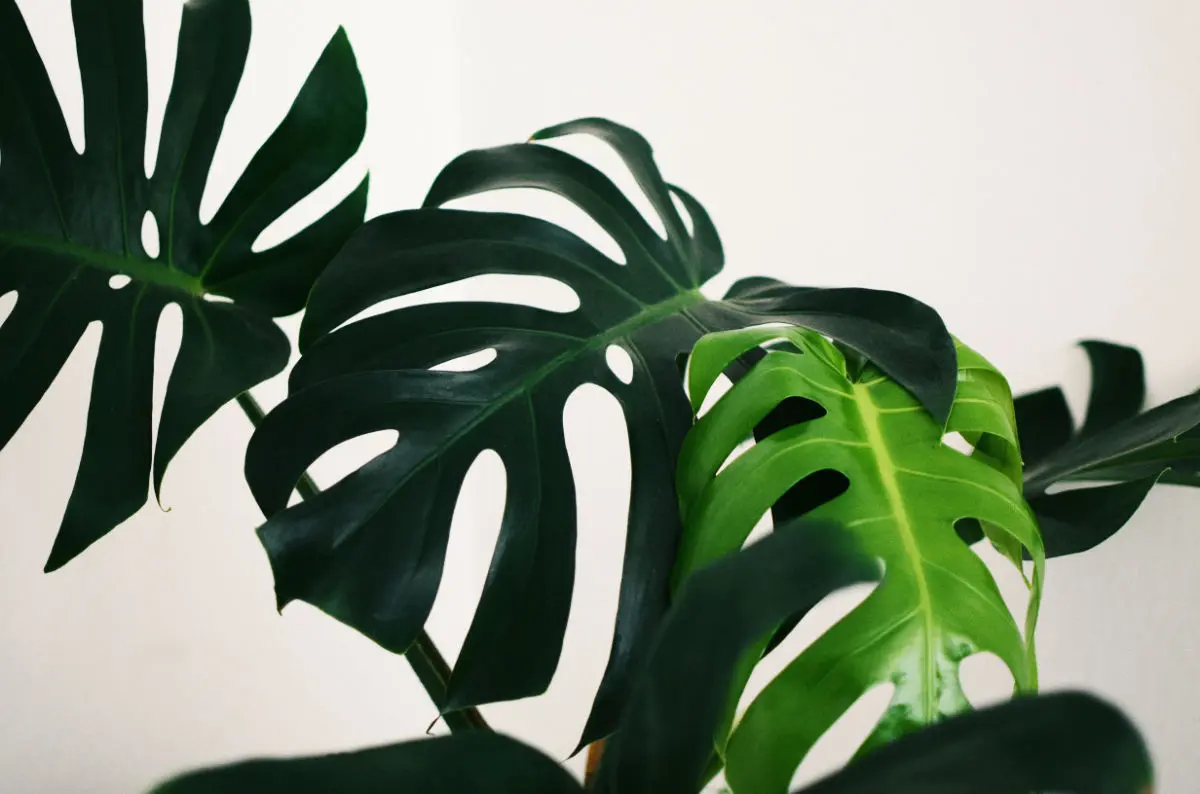When Your Monstera Gets Too Big: Controlling Excessive Growth
If your Monstera plant is getting too big, it's important to know how to properly care for and manage its growth. Learn tips and techniques for keeping your Monstera at a manageable size while promoting its health and beauty.
By Tobias Holm
Is your Monstera plant taking over your living space? If your once small and manageable houseplant has transformed into a leafy giant, it's time to take control. In this article, we will explore the various methods and techniques for taming the excessive growth of your Monstera.
Known for its impressive size and striking leaves, the Monstera plant has gained popularity in recent years as a must-have indoor green companion. However, without proper care and attention, these plants can quickly become a monstrosity, overtaking shelves, windowsills, and room corners.
Whether you're dealing with long and unruly vines or an abundance of new growth, there are several strategies you can employ to keep your Monstera in check. From pruning to providing proper support, we will guide you through the steps needed to maintain a healthy and visually appealing Monstera.
Don't let your leafy friend dominate your living space. Take charge of your Monstera's growth and create a harmonious environment in your home. Let's dive into the world of controlling excessive growth and enjoy a well-behaved Monstera plant.
Understanding Monstera plants
Monstera plants, also known as Swiss cheese plants or split-leaf philodendrons, are native to the tropical rainforests of Central and South America. These plants are renowned for their large, glossy leaves with intricate patterns of holes and splits, giving them a unique and eye-catching appearance.
Monstera plants belong to the Araceae family and thrive in warm, humid environments. When provided with the right conditions, these plants can grow rapidly and reach impressive sizes, making them a popular choice for indoor gardens. However, their rapid growth can also lead to challenges in maintaining their size and appearance.
Proper understanding of Monstera plants is essential for controlling excessive growth. These plants have aerial roots that allow them to climb trees in their natural habitat. When grown indoors, they may attempt to climb walls, curtains, or other nearby objects if not properly trained and cared for. Additionally, Monstera plants can produce long vines that can quickly take over a space if left unchecked.
To effectively manage the growth of your Monstera plant, it is important to be familiar with its natural tendencies and growth patterns. This knowledge will help you implement appropriate strategies to keep your plant under control and ensure its overall health and vitality.
Signs of excessive growth in Monstera plants
Excessive growth in Monstera plants can manifest in various ways. Being able to identify the signs of excessive growth is crucial for timely intervention and management. Here are some common indicators that your Monstera may be growing out of control:
- Long and unruly vines: If your Monstera's vines are stretching excessively and becoming tangled, it's a sign that the plant is growing too rapidly. These long vines can take up valuable space and make your Monstera look messy and unkempt.
- Limited space for new leaves: When your Monstera is producing new leaves, but there is limited space for them to unfurl properly, it indicates that the plant is becoming overcrowded. This can result in stunted or misshapen leaves, affecting the overall aesthetic appeal of your Monstera.
- Lack of support: Monstera plants have a natural inclination to climb and may start leaning or toppling over if not provided with adequate support. If your Monstera is struggling to stay upright or is leaning to one side, it's a sign that its growth needs to be better managed.
- Overwhelming presence: If your Monstera is dominating your living space and making it difficult to move around or enjoy other decorative elements, it's a clear indication that the plant's growth needs to be controlled.
Recognizing these signs of excessive growth is the first step towards implementing effective strategies to regain control over your Monstera plant's size and appearance. By addressing these issues promptly, you can create a more balanced and visually appealing indoor environment.
Risks and challenges of excessive growth
While the rapid growth of a Monstera plant may seem impressive, it can also present certain risks and challenges. It's important to understand these risks to prevent any adverse effects on your plant and the surrounding environment. Here are some potential risks associated with excessive growth:
- Root-bound conditions: When a Monstera plant outgrows its pot, its roots can become overcrowded and begin to circle around the root ball. This can lead to root-bound conditions, where the roots are tightly packed and unable to absorb water and nutrients effectively. Root-bound plants are more prone to stress, disease, and overall poor health.
- Increased watering needs: As a Monstera plant grows larger, its water requirements also increase. Excessive growth may result in a higher demand for water, and failure to meet this demand can lead to dehydration and wilting of the plant. Overwatering to compensate for the increased size can also cause root rot and other moisture-related issues.
- Limited access to light: An overgrown Monstera plant can block sunlight from reaching other nearby plants or windows, negatively impacting their growth. Additionally, if your Monstera is growing towards a window, it may become more susceptible to temperature fluctuations and potential damage from direct sunlight.
- Increased maintenance efforts: Managing an overgrown Monstera requires more time and effort. Regular pruning, training, and providing support structures become essential tasks, demanding your attention and resources. Neglecting these maintenance efforts can result in an unruly and unattractive plant.
Understanding the risks and challenges associated with excessive growth will help you take proactive measures to prevent them. By implementing appropriate strategies and techniques, you can ensure that your Monstera remains healthy, visually pleasing, and manageable within your living space.
Pruning techniques to control excessive growth
Pruning is one of the most effective techniques for controlling the excessive growth of a Monstera plant. Regular pruning not only helps maintain the desired size and shape but also promotes a healthier and more vigorous plant. Here are some pruning techniques to consider:
- Remove long and unruly vines: Identify the vines that are growing excessively or becoming tangled. Use clean and sharp pruning shears to cut these vines close to the main stem. This will prevent the plant from taking up unnecessary space and give it a more compact appearance.
- Trim overcrowded leaves: If your Monstera is producing an abundance of new leaves but there is limited space for them to unfurl properly, consider trimming some of the older, larger leaves. This will create room for the new growth and prevent overcrowding. Be sure to make clean cuts close to the main stem to minimize the risk of disease or pest infestation.
- Prune damaged or diseased foliage: Inspect your Monstera regularly for any damaged or diseased leaves. These can be signs of stress or underlying issues that need attention. Remove these leaves by cutting them close to the main stem. This will not only improve the overall appearance of the plant but also prevent the spread of disease or pests.
When pruning your Monstera, it's important to use clean and sharp tools to minimize the risk of introducing infections. Additionally, consider wearing gloves to protect your hands from any potential irritants or allergens present on the plant. Remember to clean your tools after each use to maintain their effectiveness.
By implementing regular pruning practices, you can keep your Monstera's growth in check and create a more visually appealing and manageable plant. Pruning also stimulates new growth, resulting in a healthier and more vibrant Monstera.
Propagation methods to manage growth
Propagation is another effective method for managing the growth of a Monstera plant. By propagating new plants from cuttings, you can control the size of your existing plant while also creating new additions to your indoor garden. Here are some propagation methods to consider:
- Stem cuttings: Select a healthy stem on your Monstera and make a clean cut just below a node. Nodes are the points on the stem where leaves emerge. Place the cutting in a jar of water or a well-draining potting mix, ensuring that at least one node is submerged or buried. Keep the cutting in a warm and humid environment, providing indirect light. Within a few weeks, roots will begin to develop, and you can transplant the cutting into its own pot.
- Air layering: Air layering is a propagation technique that allows you to create new plants while still connected to the parent plant. Select a healthy stem and make a horizontal cut just below a node. Apply rooting hormone to the cut area and wrap it with moist sphagnum moss or a similar rooting medium. Secure the moss with plastic wrap or aluminum foil, creating a sealed environment. Roots will start to develop within a few weeks. Once the roots are well-formed, you can cut the stem below the air layer and transplant it into its own pot.
- Division: If your Monstera has multiple stems or clumps of growth, you can divide the plant into smaller sections. Carefully remove the plant from its pot and separate the individual stems, ensuring that each section has a good root system. Plant the divided sections in separate containers, providing the necessary care to establish new root growth. This method allows you to control the growth of your Monstera by creating multiple, more manageable plants.
Propagation not only helps manage the growth of your Monstera but also allows you to share your plant with friends and family or expand your indoor garden. Experiment with different propagation methods to find the one that works best for you and your Monstera.
Using support structures to prevent excessive growth
Providing proper support structures is key to preventing excessive growth and maintaining the desired shape of your Monstera plant. These structures help guide the plant's growth and prevent it from sprawling in unwanted directions. Here are some support options to consider:
- Moss poles: Moss poles are popular support structures for Monstera plants. These poles are made of a central rod covered with sphagnum moss, which helps retain moisture and provides a suitable climbing surface for aerial roots. Secure the moss pole in the center of the pot and gently guide your Monstera's vines towards it. As the plant grows, it will naturally attach itself to the moss pole, allowing it to climb and stay upright.
- Trellises: Trellises are vertical structures with a crisscross pattern that provide support for climbing plants. Install a trellis behind your Monstera and gently train its vines to climb along the trellis. As the plant grows, secure the vines to the trellis using soft plant ties or twine. This will help prevent the plant from sprawling and create a more controlled and visually appealing growth pattern.
- Wall-mounted supports: If you have limited floor space, consider using wall-mounted supports for your Monstera. These can be hooks, brackets, or specialized plant hangers that allow you to attach your plant to the wall. Ensure that the support is securely fastened to the wall and gently guide your Monstera's vines towards it. Wall-mounted supports not only prevent excessive growth but also create an interesting vertical display.
When using support structures, it's important to regularly inspect them for stability and make any necessary adjustments. Ensure that the support is strong enough to bear the weight of your Monstera and that it provides adequate room for the plant to grow and spread. By providing proper support, you can effectively manage the growth of your Monstera and create a visually appealing display in your home.
Repotting and root management for controlling growth
Repotting and root management are essential for controlling the growth of your Monstera plant. These practices help prevent root-bound conditions and ensure that your plant has enough space to grow and thrive. Here are some considerations for repotting and managing the roots:
- Repotting frequency: Monstera plants generally require repotting every 1-2 years, depending on their growth rate. As the plant outgrows its current pot, its roots become crowded and may start circling around the root ball. This can lead to root-bound conditions and hinder the plant's overall health. When repotting, choose a pot that is 1-2 sizes larger than the current one to provide ample room for root expansion.
- Root pruning: If your Monstera has become root-bound or the roots are excessively circling around the root ball, consider root pruning during repotting. Gently tease out the roots and trim any excessively long or tangled ones. This will encourage new root growth and prevent the plant from becoming root-bound in its new pot. Be careful not to remove too many healthy roots, as this can stress the plant.
- Well-draining soil: Monstera plants prefer well-draining soil that allows excess water to flow out easily. Choose a potting mix specifically formulated for indoor plants, or create your own by combining equal parts peat moss, perlite, and a well-balanced potting soil. Good drainage is crucial for preventing waterlogged conditions and root rot.
During the repotting process, handle your Monstera with care to avoid damaging its delicate leaves or stems. Water the plant thoroughly after repotting to help settle the soil and provide hydration to the roots. Place the plant in a warm and humid location to aid in recovery and new root growth.
By repotting and managing the roots of your Monstera plant, you can prevent excessive growth and ensure that your plant remains healthy and well-nourished. Regularly inspect the roots during repotting to identify any issues and take appropriate action to maintain a balanced and controlled growth pattern.
Conclusion
If your Monstera gets too big, there are several options available for you to control this popular house plant's excessive growth. Pruning, propagation, providing good support structures and repotting are all effective in managing your Monsteras size.
By following these simple tips and tricks, you kan keep your Monstera from growing too much. And always keep in mind good lighting conditions, adequate watering and a healthy soil.
Happy gardening.



